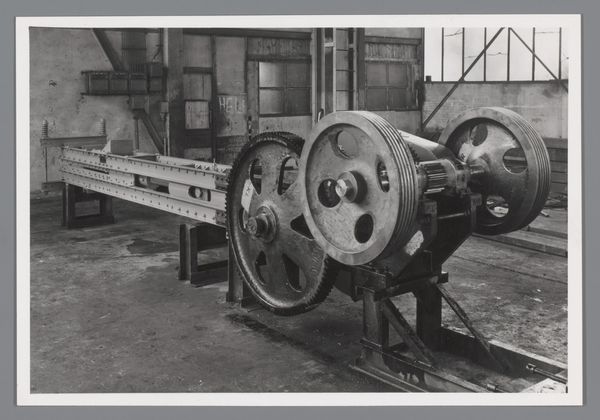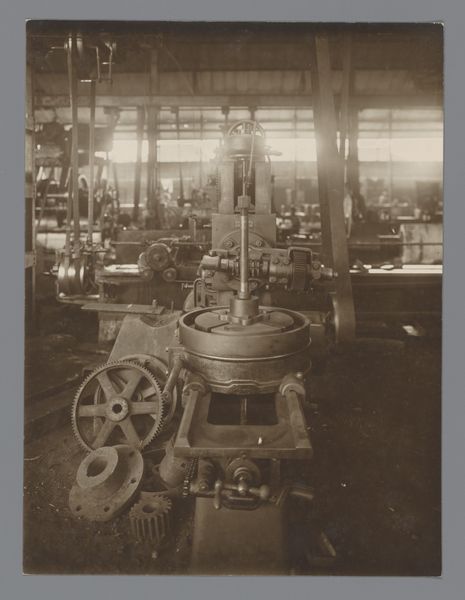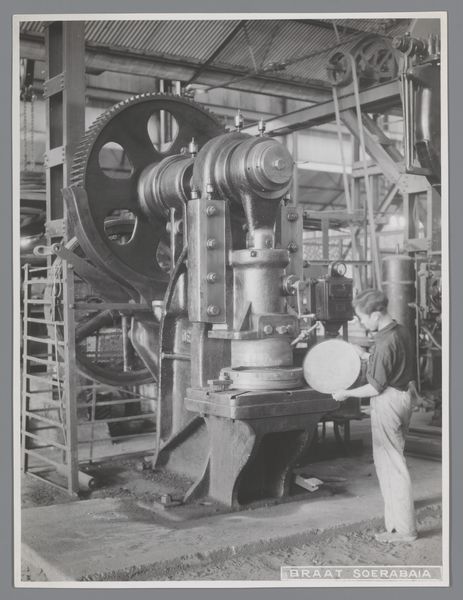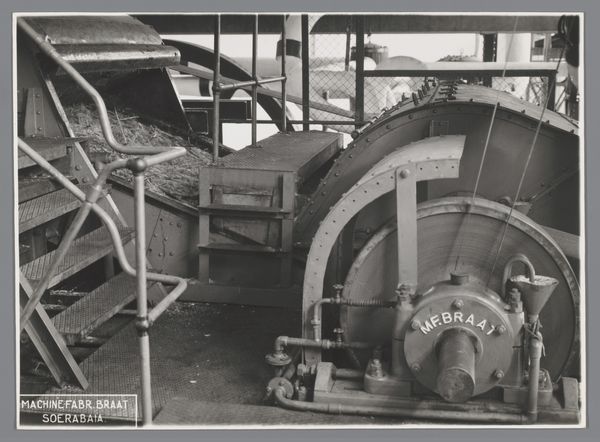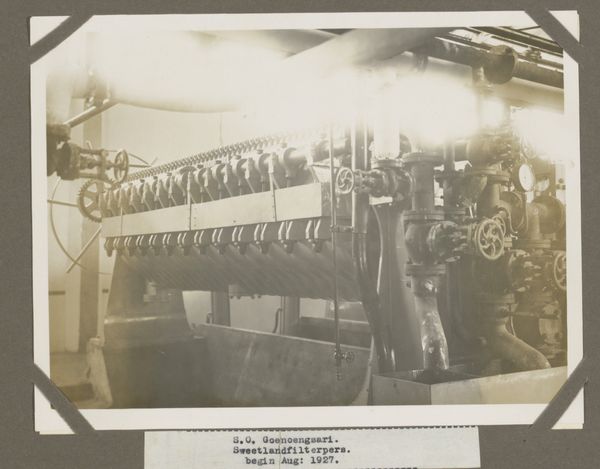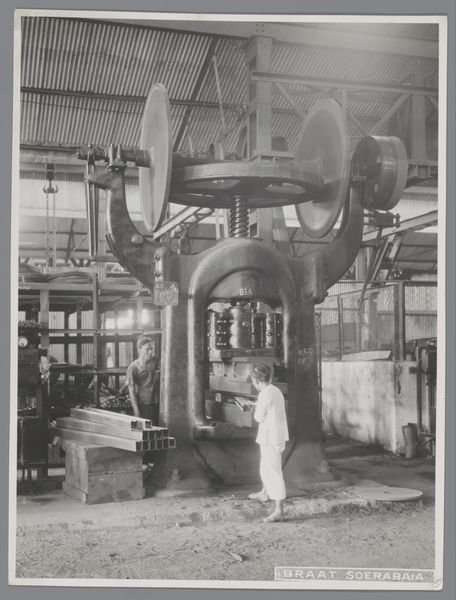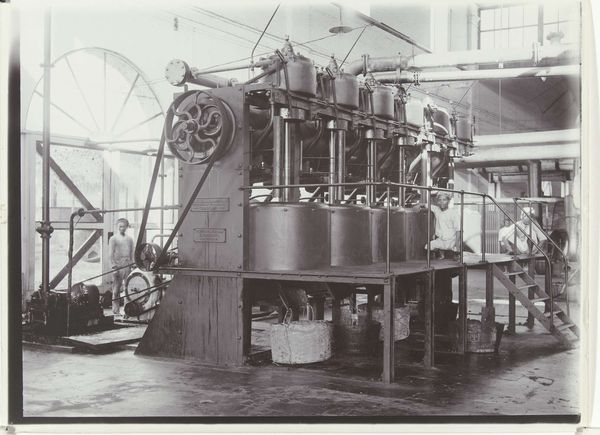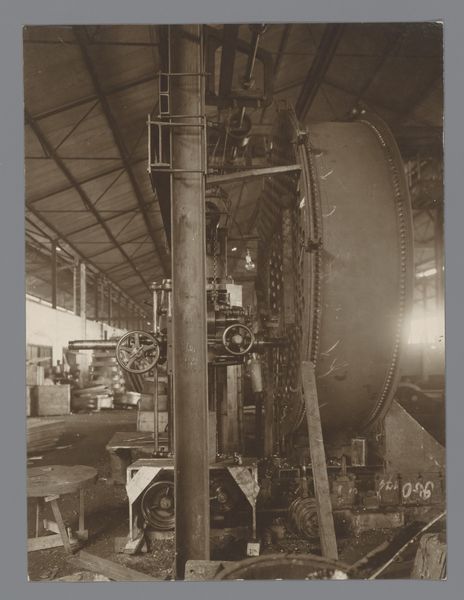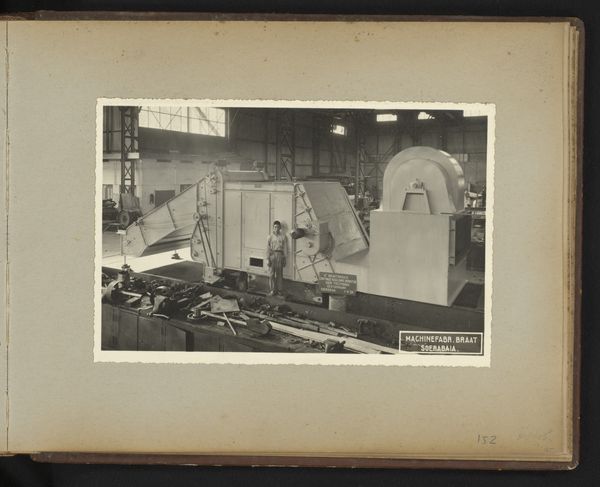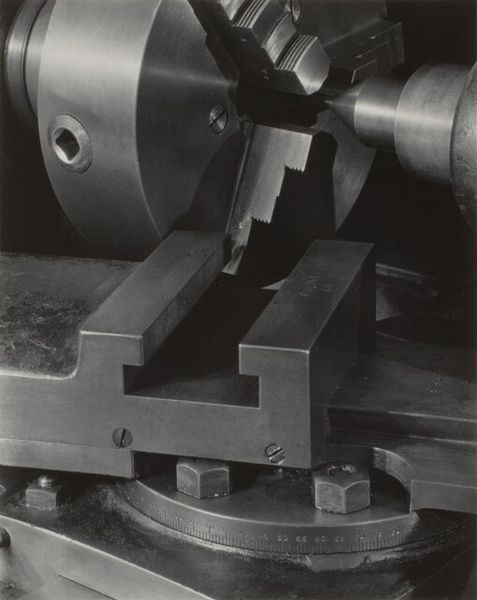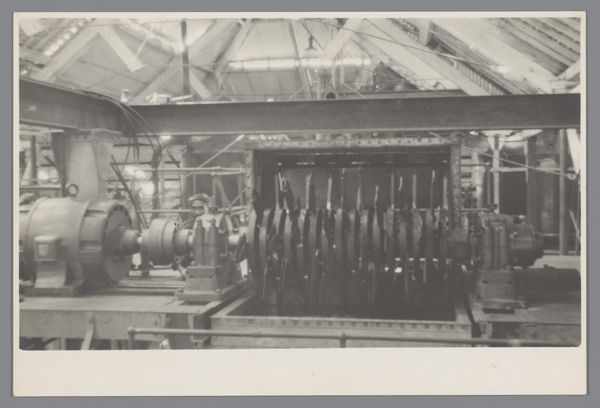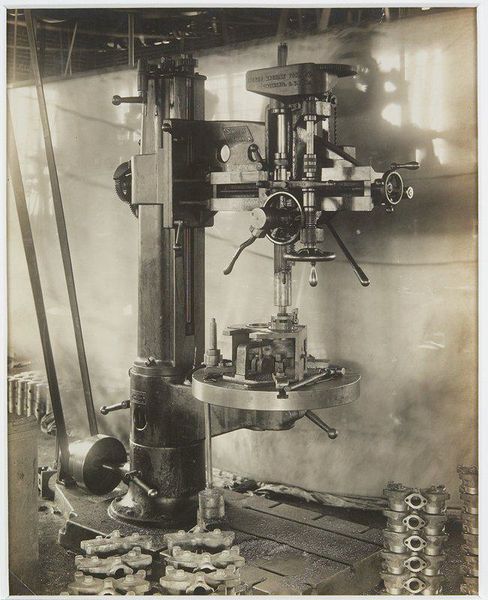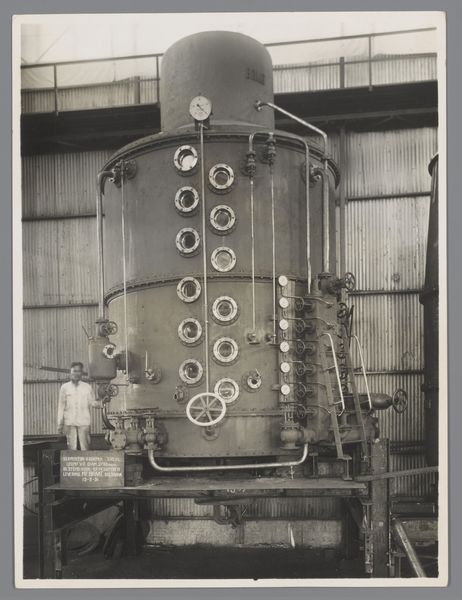
photography
#
photography
#
geometric
#
monochrome
Dimensions: height 162 mm, width 113 mm
Copyright: Rijks Museum: Open Domain
Editor: This black and white photograph, "Pomp" from 1923 by an anonymous artist, shows what appears to be some sort of industrial machine. It looks imposing, solid, even... majestic, in a weird way, despite being just a machine. What do you make of this, looking at it from your perspective? Curator: The immediate thing I notice is its frank depiction of industrial material. Look at the weight of the metal, the bolted construction, the cog wheels dominating the upper part of the machine, and how the photograph centers them. This isn't about artistry in the traditional sense. It seems to focus on labor, specifically what produces labor. It almost worships production and process. Editor: So you’re saying it's not trying to be beautiful, but functional? And how does it elevate these things? Curator: It's showcasing the *means* of production. Notice the light, and the high resolution. There is not anything to be hidden. Each gear, bolt and rivet is clearly shown. We might think about what materials, processes, and locations are not being shown? Editor: You make a great point about it hiding something. What about its consumption of something or its impact? We are only given a section of the process. Curator: Precisely! What happens before and after? And it’s “signed” anonymously... Why do you think that might be important in the context of labor and materialism? Editor: That’s really interesting. It forces you to look past the ‘artist’ and focus solely on what’s been presented: material, production, labor. So instead of ‘art,’ this photograph serves as documentation? I didn't quite expect that, thanks. Curator: Precisely! And documentation *is* itself an act of labor and decision-making. Hopefully you see that focusing on materials can uncover previously hidden assumptions about a work.
Comments
No comments
Be the first to comment and join the conversation on the ultimate creative platform.
